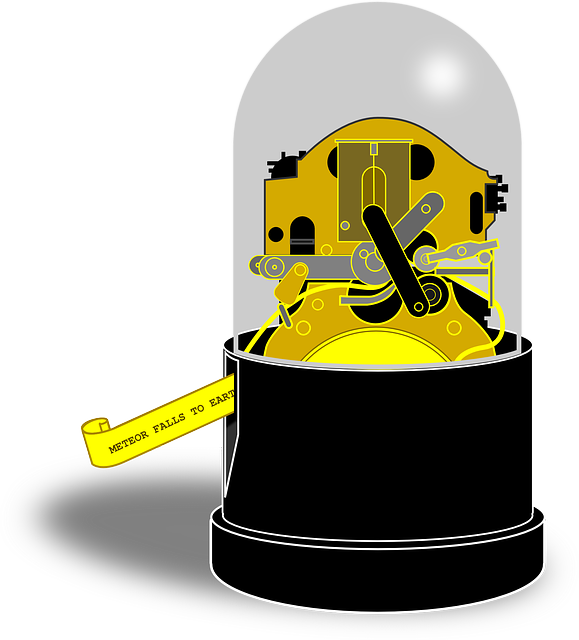Definition:
A “Ticker Symbol” is a unique one to five letter code used by the stock exchanges to identify a company. It is called a ticker symbol because the stock quotes used to be printed on a ticker tape machine that looked like the images below. When it printed the stock quotes, it made a tick-tick-tick sound!

Caution: When you are researching a company, don’t be tricked into thinking that the ticker symbol is just an abbreviation of the company name. Sometimes it is very different.
For example, here are some popular and interesting ticker symbols:
WMT is the symbol for WalMart,
AAPL is the symbol for Apple, Inc.,
LUV is the symbol for SouthWest Airlines,
BUD is the symbol for Anheuser-Busch,
HOG is the symbol for Harley Davidson,
F is the symbol for Ford.
How Do Companies Pick Their Tickers?
It depends on who is in charge! Companies can choose whatever they want to be their ticker symbol, so long as it is not already taken, and the regulators do not think it is misleading (in a famous case, a company was prevented from choosing “FBI” as their ticker).
Usually companies try to pick a ticker that could be an abbreviation for their company to make it easier for investors to find. Other times, the connection is less obvious. In the examples above, we have:
LUV, for SouthWest Airlines. They chose this ticker because their business started at Love Field, an airport in Texas.
HOG, for Harley Davidson. Motorcycle fans will often refer to Harley motorcycles as Hogs, which they borrowed for their ticker.
BUD, for Anheuser-Busch. They are a brewer, and their biggest beer brand is Budweiser, which they used for their ticker.
KO, for Coca-Cola. CO was already taken when Coca-Cola first became a public company, so they chose the next-best sounding ticker.
Companies will usually choose the shortest possible tickers, since longer tickers seem like “newer”, less-established companies.
Why Do We Use “Tickers”?
Most beginning investors find it confusing to use ticker symbols because before you can begin to do any stock research, you must look up the ticker. And when you do look up tickers, you will often be surprised how many companies there are that have very similar names. Make sure you are buying the stock that you think you are buying. Ticker “COKE” is not the Coca-Cola Company! Wouldn’t it just be easier if we used the company names? We try to help this with our Smart Trade Drop-Down, where by typing the company name in the trading window, we will give you tickers that match. [link name=”trade” dest=”/trading/equities”]Click Here To Try![/link] However, lets take a look at where ticker symbols came from, and why we still use them today.
Early Tickers
Ticker machines first came into use during the late 1800s as a fast way to move news across far distances; they used telegraph lines to transmit messages electronically. However, with a telegraph machine, each letter of the message had to be spelled out in Morse Code (a series of dots and dashes), read by the operator on the other end, and then typed out onto a message to be actually read by anyone.
This was a time-consuming process; the longer the message, the longer it took to write, translate, and read. To speed things up, shorthand writing (the predecessor of today’s “text speak”) was invented. Famously, an old British admiral was the first person to use “OMG” as shorthand in a message to one of his colleagues.
For investors looking to get the latest stock prices, this was also a problem. Since there were hundreds of companies being traded and prices being updated every minute, the longer it took to communicate a company’s price meant the whole stream of information was held up. Thus, company names were shortened down to 1-5 characters, and the first ticker symbols were born.
Rise of Electronic Trading
Today, the original reason for tickers is still important; computers still take time to process longer names, so shorter codes can be a lot faster when executing billions of trades per day (if you are making trades as fast as you could, it would take almost 5 times as long to write “The Coca-Cola Company” than it would “KO“). There is also another reason why we continue to use tickers: sometimes companies have multiple “types” of stock, or multiple companies have very similar names.
For example, Google has stock both under the symbol “GOOG” and “GOOGL“. These stocks are very similar, but they were issued at different times and have different prices, since each share represented a different “slice” of the company.
Classes of Stock
There is also another reason why we continue to use tickers: sometimes companies have multiple “types” of stock, or multiple companies have very similar names.
For example, Google has stock both under the symbol “ GOOG” and “ GOOGL“. These stocks are very similar, but they were issued at different times and have different prices, since each share represented a different “slice” of the company, and have different rights for investors.
Sometimes you might see a “.A” or “.B” after a ticker symbol – this usually indicates a class A or class B type of shares. Companies may occasionally issue different classes of shares if they issue stock more than once – and each class of shares represents a different percentage ownership of the company.
How to Find a Stock’s Ticker Symbol
On most financial websites, you will find a QUOTES or GET QUOTES link. When you click on those links, it will take you to a stock quote screen. Usually there is a link on that page that says TICKER SYMBOL LOOKUP or similar. If there is not a ticker symbol lookup link, then try just typing the company name in and some pages will show you related tickers.
You can look up any ticker by clicking “Quotes” in the main menu of this page.

Pop Quiz!
[mlw_quizmaster quiz=17]

